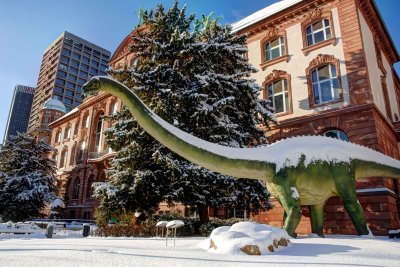Research-Initiatives
VeWA Past warm periods as natural analogues of our 'high CO2' climate future
What do we expect if the carbon dioxide content of the atmosphere doubles compared to pre-industrial levels? According to estimates by the International Panel on Climate Change (IPCC), such a greenhouse climate can be expected before the end of this century without effective countermeasures. The last time Earth experienced comparably high CO2 levels more than 35 million years ago, during the Palaeogene. In the VeWA consortium, geologists, biologists, geographers and climate modellers have joined forces to quantitatively investigate the deep-time palaeoclimate and the palaeoenvironment as potential analogues of such high-CO2 periods, ideally at seasonal resolution. At the same time, the VeWA team considers looking back also as a window into the future, since climate models for climate prediction can also be applied to the geological past, thus allowing their performance to be evaluated. VeWA uses the composition of marine organisms and that of sediments on land as climate archives, which also includes the World Heritage site Messel in Hessen. Overall, VeWA aims to reconstruct the climate on land and in the sea, the chemistry of the ocean and the development of biodiversity during high-CO2 periods. The results and background will be presented in a hands-on exhibition at the Senckenberg Museum.
Partners
- Goethe University Frankfurt (lead management)
- Senckenberg Nature Research Society, Frankfurt am Main
Fields of study
- FB11 Geosciences/Geography (Institute for Geosciences, Institute for Atmosphere and Environment, Institute for Physical Geography)
Funding period
since 2020Project Coordinator
- Professor Dr Wolfgang Müller, Goethe-University Frankfurt
Locations
- Frankfurt am Main





